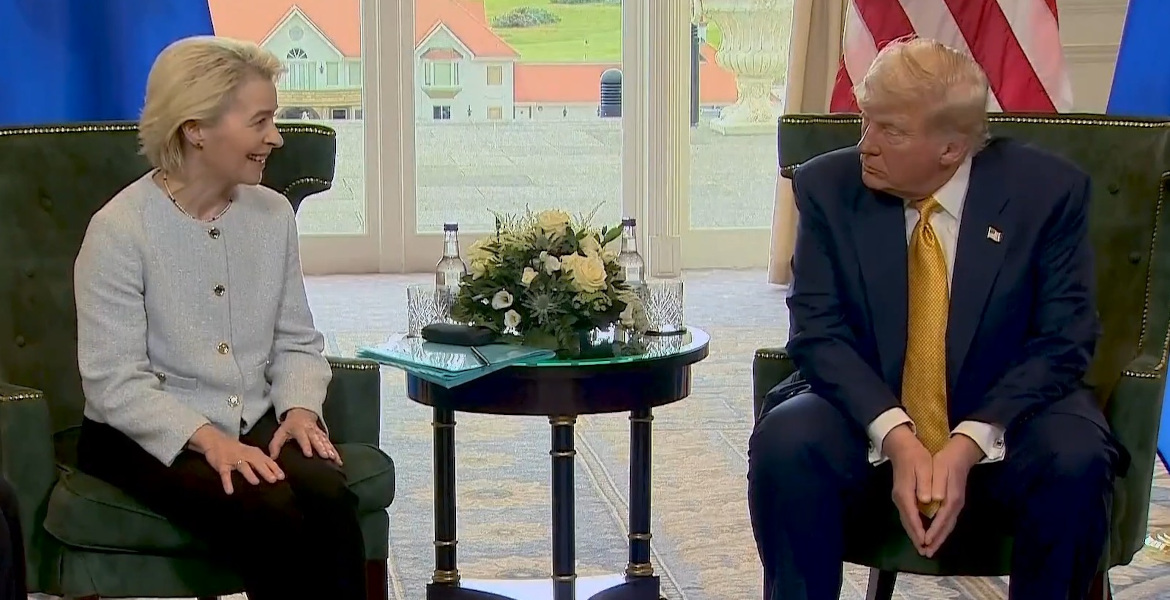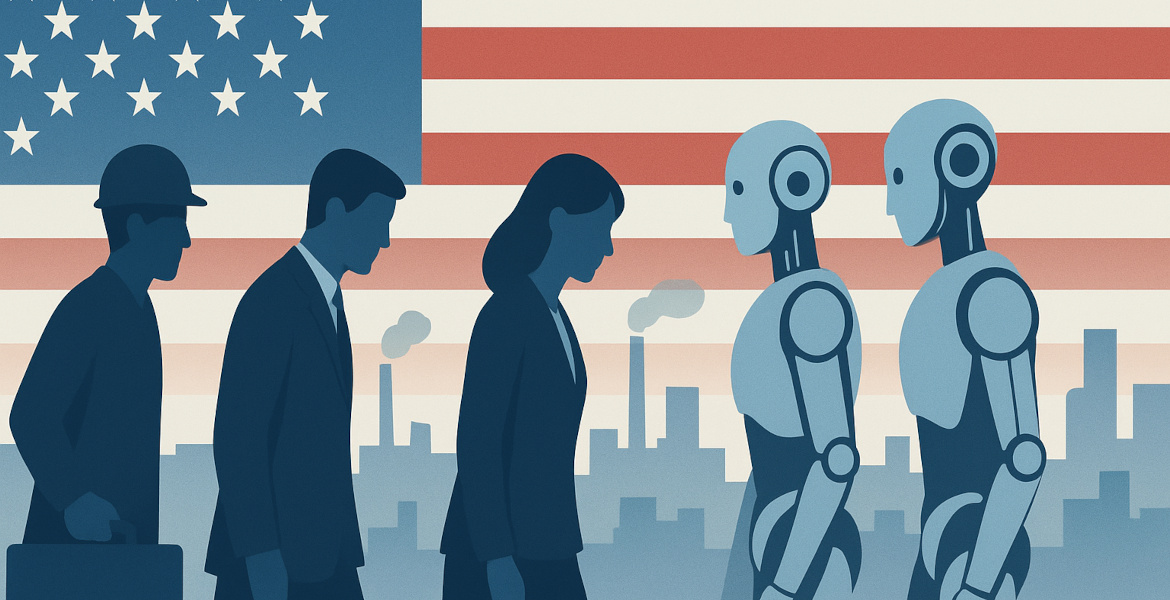The EU and US have reached agreement on a comprehensive trade deal that involves 15 percent American import tariffs on the majority of EU goods. The agreement marks an important step toward stability and predictability in transatlantic trade.
After months of tense negotiations, a new trade agreement between the EU and US was announced yesterday.
The agreement means that the US will impose a general tariff rate of 15 percent on the majority of EU exports to the US, including products from the automotive industry. Exceptions are made for steel and aluminum, which continue to be regulated under separate quota systems.
European Commission President Ursula von der Leyen and US President Donald Trump presented the agreement after meetings in Scotland, where they described it as "all inclusive" and a breakthrough that creates stability in an uncertain global economic situation.
– I think this is the biggest deal ever made, Trump said during a press conference celebrating the agreement.
The agreement also includes significant energy cooperation where the EU commits to investing in and purchasing American energy worth $750 billion.
European Commission President Ursula von der Leyen commented on the agreement in positive terms: – We have a trade deal between the two largest economies in the world, and it's a big deal. It's a huge deal. It will bring stability. It will bring predictability.
'I think this is the biggest deal ever made,' Trump told reporters. Von der Leyen, describing Trump as a tough negotiator, said the 15% tariff applied 'across the board,' later telling reporters it was 'the best we could get' 5/6 pic.twitter.com/XxozCi7YC0
— Reuters (@Reuters) July 28, 2025
Agreement faces criticism: "Unbalanced"
Additionally, the EU plans to make investments of $600 billion in the US over a longer period. This includes liquefied natural gas (LNG), oil and nuclear fuel, which is seen as part of the EU's ambition to reduce dependence on Russian energy.
The trade agreement further includes tariff-free trade on selected strategic products such as aircraft, aircraft parts, semiconductors and certain chemicals, which is expected to benefit both parties' industrial sectors. However, some uncertainty remains regarding tariff rates on certain agricultural products and beverages.
The agreement averts a looming tariff conflict where the US had previously threatened up to 50 percent import tariffs on European goods, a level that was later reduced to 30 percent before the final agreement was reached.
Many in Europe still consider the baseline level of 15 percent too high, particularly in light of original hopes for a zero-to-zero agreement.
Criticism also comes against what many consider a worse deal for EU member states compared to the agreement concluded between the US and the UK – a UK that moreover stands outside the EU.
World leaders react after the US and the EU strike a trade deal on tariffs, described by President Donald Trump as his "biggest deal ever," with France's Prime Minister saying it marks "a dark day" for Europe:
https://t.co/SF1v4JQZ3O— gript (@griptmedia) July 28, 2025
Bernd Lange, a German Social Democrat and chair of the European Parliament's trade committee, sees the tariffs as "unbalanced". He warns that the extensive EU investments now directed toward the US will likely come at the expense of the EU itself.
European companies largely welcome the agreement, which is expected to contribute to increased trade and investment across the Atlantic, while the agreement signals new opportunities for cooperation in energy and technology.
Fact box: WTO, tariffs and trade conflicts
- WTO's role: The World Trade Organization (WTO) regulates international trade and aims to minimize tariffs and other trade barriers between member countries.
- Tariffs: Taxes on imported goods that affect prices and competitiveness. High tariffs can reduce trade and lead to negative economic effects globally.
- Trade wars: Escalated tariff increases between countries, which the US and EU came close to initiating, can damage exports and imports, worsen relations and create market uncertainty.
- Economic effects: Stability and low tariffs promote investment and growth. The agreement between the EU and US is expected to reduce the risk of trade tensions and enable long-term planning for companies on both sides.
- Energy and geopolitics: The energy component of the agreement is linked to Europe's energy transition and its ambition to reduce dependence on Russian gas and oil through American energy sources.




